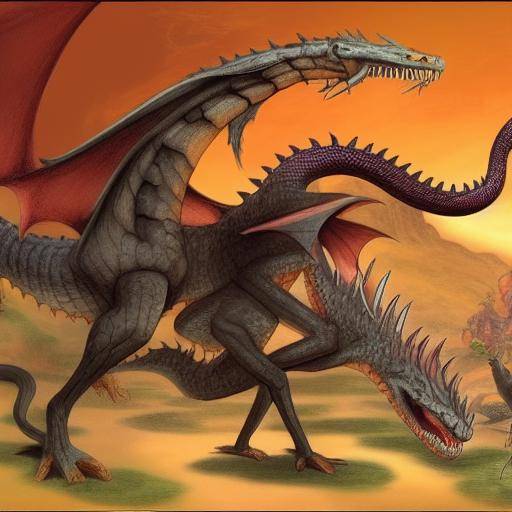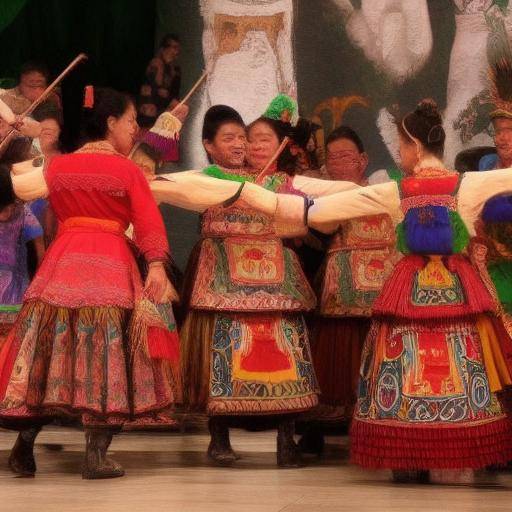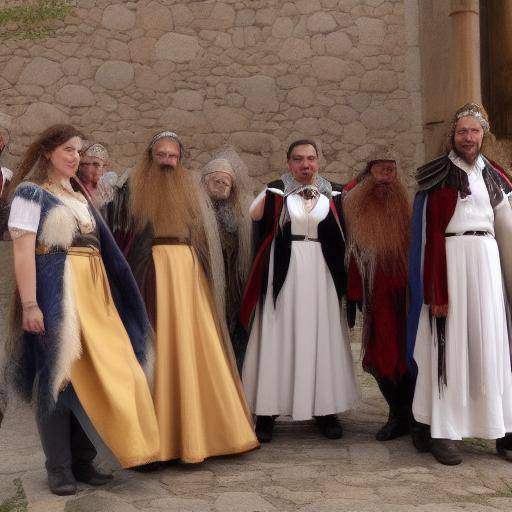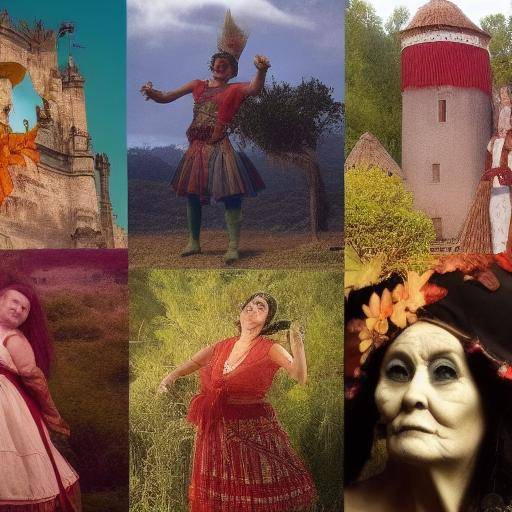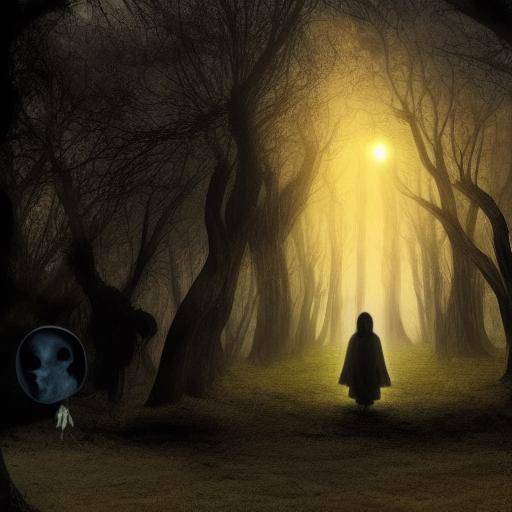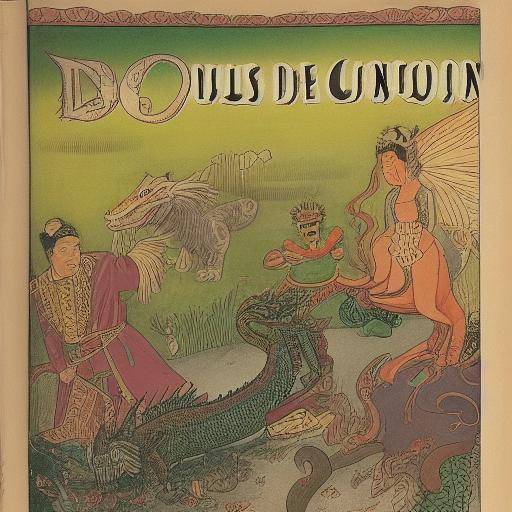
Introduction
The nine-tail fox legend in Japan is a fascinating part of the Japanese folklore that has captivated generations with its mysticism and charm. In this article, we will explore in depth the history of the fox of nine tails, its meaning in the Japanese myths, as well as the legends that have shaped this mythical figure. You will discover the rich cultural tradition and rooted beliefs that surround this supernatural being, as well as its influence in contemporary society. Prepare to embark on a journey through time and fantasy as we unravel the mysteries of the nine-tailed fox and its impact on Japanese culture.
History and Background
The fox of nine tails, known as "Kitsune" in Japanese, has its roots in Japanese mythology and has been a recurring symbol in traditional narratives. It is believed that these mystical beings possess supernatural abilities and are considered both protective and deceptive in Japanese tradition. Over the centuries, the fox of nine tails has evolved to represent different concepts, from cunning and wisdom to betrayal and intrigue. As we explore your history, we will discover how this mythical figure has influenced popular culture and collective imagination.
Origins and Meaning
The first known references to the nine-tailed fox date back to the Heian period in Japan, ranging from the eighth century to the twelfth. During this time, the narratives on nine-tailed foxes began to appear in Japanese literature and legends, establishing the basis for their role in mythology. These beings were believed to possess supernatural powers, including the ability to change shape and exercise control over natural forces.
Number nine has a special symbolism in Japanese culture, associated with longevity, wisdom and eternity. Therefore, the fox of nine tails became a symbol of knowledge and cunning, as well as a guardian of mystical secrets. Throughout history, the nine-tailed fox has embodied a wide range of meanings, from benevolence to malice, which has contributed to its intricate representation in Japanese cultural traditions.
Significant developments
Over time, the nine-tailed fox was integrated into different aspects of Japanese culture, from Kabuki theatre and Noh to literature and visual art. His presence became more and more prominent in popular stories and artistic representations, which led to a wide diversity in the characterization and interpretation of the fox character. Japanese writers, poets and artists have employed the figure of the nine-tailed fox to explore themes such as human duality, the deceptive nature of reality and the struggle between good and evil.
Analysis in Deep
The fox of nine tails has exerted a lasting influence on Japanese culture, penetrating various aspects of society and art. By exploring in detail its impact, we will discover how this mythical figure continues to play a significant role in collective consciousness and creative expression.
Benefits and Challenges
The presence of the nine-tailed fox in Japanese culture has enriched artistic expression and narrative, providing layers of meaning and complexity to literary and theatrical works. The capacity of the nine-tailed fox to be transformed has served as a metaphor for the changing nature of the human being, allowing artists to explore themes of identity, illusion and self-discovery. However, the use of the nine-tailed fox figure has also posed challenges, especially in the precise representation of its mystical and symbolic attributes, avoiding to fall into simplistic stereotypes or insensitive cartoons.
Diverse Perspectives
The diversity of nine-tailed fox interpretations reflects the many facets of Japanese culture and its rich mythological tradition. From the older versions of legends to contemporary reinterpretations in literature and cinema, the fox of nine queues has assumed different nuances and meanings over time. This variety of perspectives offers a myriad of possibilities for creative exploration and critical reflection around human nature and interaction with the supernatural.
Details of Complex Concepts
By analysing in detail the figure of the nine-tailed fox and its relevance in Japanese myths, we can appreciate the depth of its influence on Japanese culture. The complexity of his interpretations and attributes invites us to deepen the roots of Japanese folklore and to understand the interconnection between myth, archetype and human experience. This detailed examination allows us to appreciate the narrative and symbolic richness that the nine-tailed fox brings to the Japanese cultural heritage.
Exhaustive examination
In considering the multiple dimensions of the nine-tailed fox and its place in Japanese mythology, we can glimpse the lasting impact of this mythical figure over the centuries. Its influence encompasses both the spiritual and the artistic sphere, enriching cultural expressions and feeding the collective imagination.
Applications, Case Studies and Best Practices
The nine-tailed fox has been an inexhaustible source of inspiration for artists, writers and creators around the world. His presence in the Japanese folklore has stimulated the exploration of fundamental themes such as duality, the nature of reality and the struggle between good and evil, generating works rich in nuances and meaning. In analyzing the different creative approaches and best practices in the representation of the nine-tailed fox, we can unravel the techniques and strategies that have enriched artistic and literary expression.
Industry Perspectives and Expert Reviews
The influence of the nine-tailed fox is not limited to the artistic sphere; it has also left its mark on contemporary popular culture and modern forms of entertainment. Through interviews with Japanese folklore experts, traditional cultural and narrative studies, we can get a insightful view of the implications of the nine-tailed fox in current society and emerging trends in the representation of mythical figures in global popular culture.
Comparative analysis
By comparing the fox of nine tails with other Japanese myths and legends, we can discern the similarities, differences and synergies that exist between these timeless stories. This comparative approach allows us to appreciate the many facets of Japan's rich cultural heritage and its impact on global imagination.
Parallel and Differences
The comparison of the nine-tailed fox with other supernatural beings and Japanese mythical figures reveals the diversity of beliefs and narratives that have flourished in the cultural context of Japan. To explore the similarities and differences between these figures gives us a deeper understanding of Japanese mythology, as well as a greater appreciation of the different influences and interconnections between myths and legends.
Examples and Scenarios Detailed
In presenting concrete examples and detailed scenarios that illustrate the interconnections between the fox of nine queues, the Japanese little ones and the legends, we can enrich our understanding of the Japanese narrative and its resonances in contemporary culture. These examples allow us to appreciate the vitality and continued relevance of these mythical figures in human imagination, as well as the ability of ancient stories to inspire and captivate in the modern era.
Practical Tips and Accessible Tips
For those interested in exploring the Japanese folklore more thoroughly, we offer a series of practical advice and actions that will allow them to immerse themselves in the rich mythical traditions of Japan. From essential reading recommendations to guidelines to appreciate cultural manifestations of the nine-tailed fox today, these tips provide a road map for those who wish to immerse themselves in the wonders and mystery of Japanese folklore.
Conclusions and FAQs
Conclusions
In short, the history of the nine-tailed fox, the Japanese myths and legends transport us to a world of wonders and mysteries that have transcended cultural time and borders. Through their evolution over the centuries, these mythical figures have woven a network of meanings and inspiration that continues to resonate in human consciousness, inviting us to reflect on our relationship with the supernatural and the transcendent.
Frequently asked questions
1. What is the origin of the nine-tail fox in Japanese mythology?
The fox of nine tails has its roots in the old Japanese beliefs and narratives, where it is attributed supernatural powers and deep symbolisms.
2. What role does the nine-tailed fox play in Japanese legends?
The fox of nine tails has been represented as a cunning being with the ability to change shape, often acting as a messenger between the spiritual and the human world, and serving as guardians or secret revealers.
3. How has nine-tail fox been represented in Japanese literature and art?
The fox of nine tails has been a recurring source of inspiration for writers, artists and playwrights, leading to rich and varied representations that explore their mutant nature and their influence on human condition.
4. What is the contemporary relevance of the nine-tailed fox in Japanese culture?
Although rooted in tradition, the nine-tailed fox remains an influential figure in Japanese popular culture, manifesting itself in modern forms of entertainment and creative expression.
5. What is the relationship between the nine-tailed fox, the Japanese myths and the legends?
The fox of nine tails, the Japanese myths and legends share thematic and symbolic interconnections, offering a broader view of Japanese mythology and its cultural implications.
6. How can I deepen my understanding of the nine-tailed fox and Japanese myths?
Exploring literary works, theatrical performances and contemporary manifestations of Japanese folklore are excellent ways of getting into the nine-tailed fox universe and Japanese myths.
With these answers, we trust that you have gained a deeper understanding and appreciation for the history of the nine-tailed fox, the Japanese myths and the legends. He continues to explore Japan's rich cultural heritage to unravel the secrets and wonders these mythical figures enclose.
Conclusion:
The story of the nine-tailed fox, the Japanese myths and legends is a fascinating journey through the human psyche and the collective imagination. Over the centuries, these mythical figures have transcended the borders of time and space, captivating imagination and offering a window to Japan's rich cultural heritage. In exploring the evolution and meaning of the nine-tailed fox, as well as its relation to Japanese myths and legends, we have unraveled the complexities of Japanese mythology and its lasting impact on human consciousness. The lasting influence of these mythical figures invites us to reflect on the intersection between the sacred and the profane, the supernatural and the earthly, enriching our understanding of the human condition and our connection with the world around us.
As we continue to explore the vast universe of Japanese folklore, we encourage you to immerse yourself in literary works, artistic representations and contemporary manifestations that celebrate the narrative and symbolic richness of the fox of nine queues, Japanese myths and legends. Discover the amazing diversity of interpretations and expressions that give life to these mythical figures, and let your mystery and charm inspire you on your own journey of self-discovery and cultural enrichment.
With our exploration of the history of the nine-tailed fox, the Japanese myths and legends, we look forward to your curiosity and encouraged your appreciation for Japan's rich cultural tradition. May this journey have enlivened your passion for the exploration of the wonders that lie in the mythologies of the world, and that inspires you to continue unraveling the riddles and beauties that lie in the heart of eternal stories.






